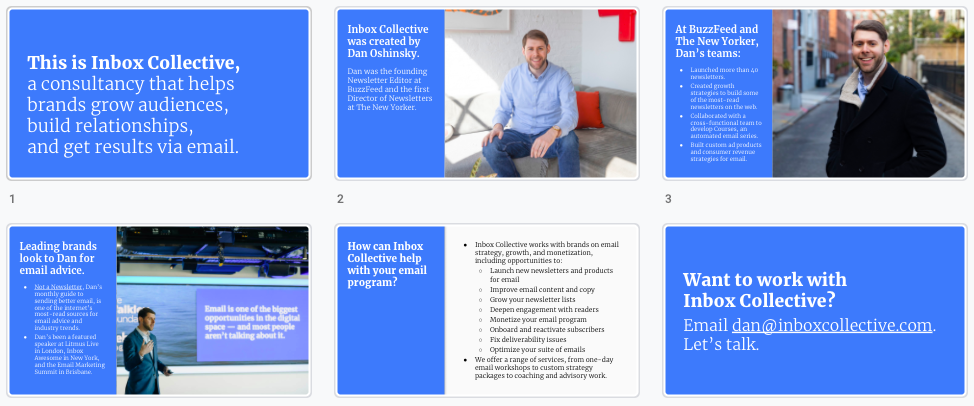
When I was 23 years old, I decided to launch my first news organization. I decided to call it Stry.us.
It was a news organization dedicated to telling untold stories in undercovered places — areas that folks in the news business now refer to as “news deserts.” I thought the name was clever. I’d pronounce it “Story.” I liked the .us, too — it implied that these were both American stories (“U.S.”) and our stories (“us”). It felt like an inclusive gesture.
It turned out that nobody could pronounce the name (“st-RYE” is how most said it) or tried to type in stry.com to their browser (which I didn’t own). I decided from then on that whenever I launched a project, it needed to be:
1.) Something people could easily pronounce and remember.
2.) A dot-com address.
It was a year ago this month that I decided I was going to leave The New Yorker to start a consulting business. On a long flight for work, I spent a few hours trying to come up with a name for my consultancy.
I started with names that seemed to have a mission attached to them, and a tagline to go with each:
3 A.M. Strategies — A consultancy for those who wake up in the middle of the night worrying, “Do I have a plan? Who do I call to fix this?”
Duct Tape Industries — When things are broken, we’ll figure out how to stick it all back together.
Zig Zig Zag — When others zig, we’ll zag. Let’s try things that no one else is trying.
But none of those actually reflected email, which is my core focus. So I pulled up domainr.com, a search engine for available URLs, and started typing in phrases that had a connection to email.
“Inbox Outbox” was already taken. “Unread Media” (a reference to the number of unread emails in your inbox) was available, but seemed a little off. (Was I really a media company?) I thought about misspellings (“Inboxx.com”) before remembering my “You have to be able to spell it” rule. I jotted down “Send Now Strategies,” which was available, and seemed like a decent option.
I kept going. My flight was showing “You’ve Got Mail” — a rare movie that features email prominently — and I put it on, trying to find something from there to use. I came up with two — “Lone Reed” and “Fox and Sons” — but they were both way too obscure. I didn’t want to spend the first five minutes of every call with a prospective client reminding them of a tiny detail from a two-decades-old movie.
But “Fox and Sons” — the name of the Tom Hanks-owned bookstore — got me thinking about how to pair names together. I tried my initials first: “DCO & Company.” I wanted something tied more to email than to me, especially if I decided to grow the company beyond just a single-person operation.
“What about Inbox and Company?”, I thought. I wrote it down — it was a contender.
Then I thought about other business-like suffixes, and tried to pair those with email related words.
• Company
• Ironworks
• Strategies
• Foundry
I considered a few permutations (“Inbox Ironworks,” “The FWD Foundry,” “bcc Strategies”). And then I tried another ending:
Collective.
As in: a collective of offerings — Not a Newsletter, a consulting business, webinars, talks — to help businesses send better email.
I started typing in ideas to Domainr to see what was available. Email Collective was taken. FWD Collective was taken.
Inbox Collective was available. It fit everything I was looking for: It was clearly about email, it was easy to remember and to spell, and it was a dot-com address.
I sat on the name for a few days, saying it over and over in my head. A few days later, it still seemed right.
I bought it as soon as I got home.
